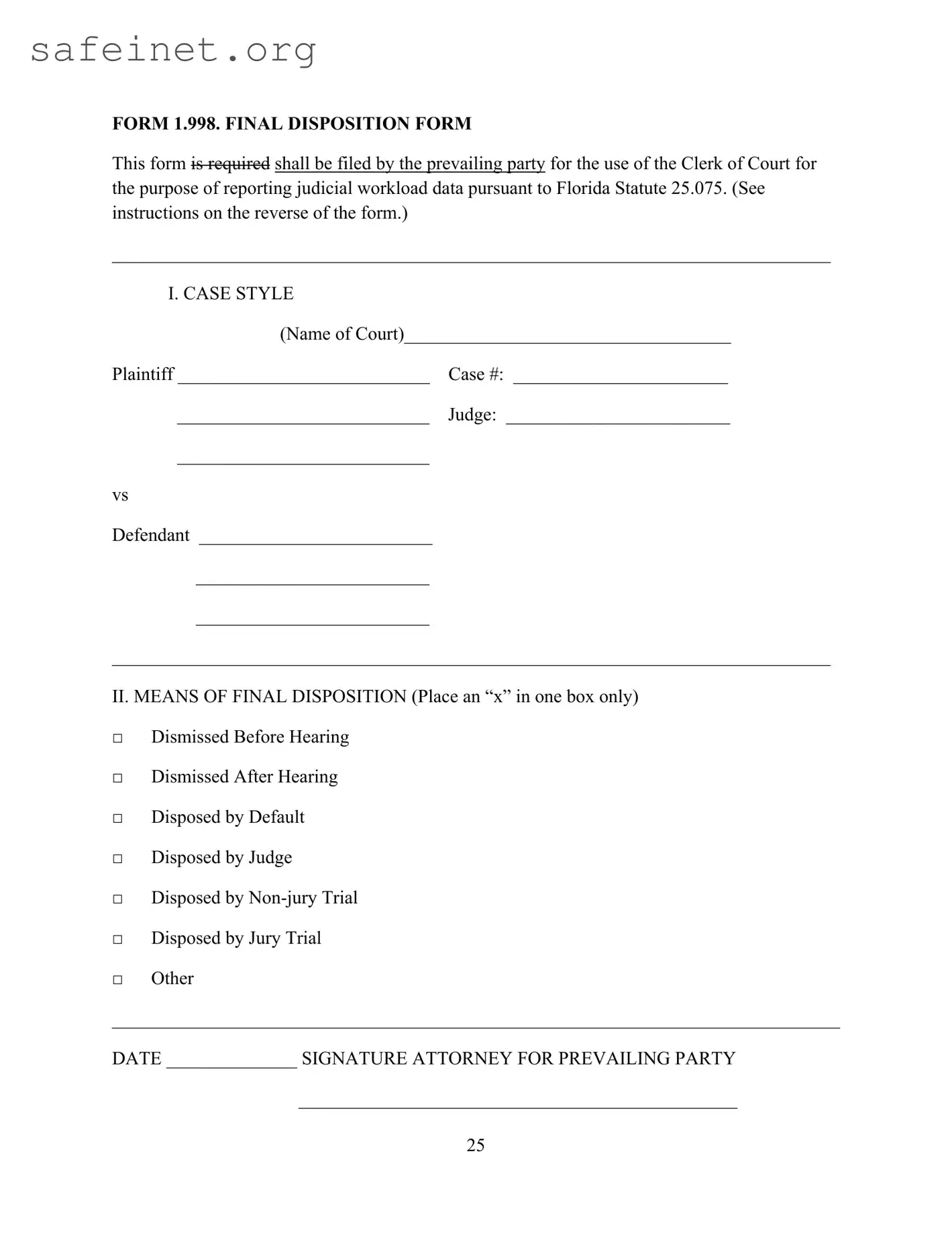What is the purpose of the Final Disposition form?
The Final Disposition form is required to be filed by the prevailing party in a legal case. It serves the purpose of reporting judicial workload data in compliance with Florida Statute 25.075. This helps courts track case outcomes and improve judicial administration.
Who is responsible for completing and filing the Final Disposition form?
The attorney for the prevailing party is responsible for completing and filing the Final Disposition form. It is crucial that the form is completed accurately to reflect the final outcome of the case.
What information needs to be included in the Case Style section?
The Case Style section requires the name of the court, the case number assigned at the time of filing, the judge's name, and the names of both the plaintiff(s) and defendant(s). It is important to ensure that all names are listed in the correct format, including last, first, and middle initial if applicable.
What are the different means of final disposition that I can select?
You can select one of the following options to indicate the final disposition of the case: Dismissed Before Hearing, Dismissed After Hearing, Disposed by Default, Disposed by Judge, Disposed by Non-Jury Trial, Disposed by Jury Trial, or Other. Make sure to check only one box to accurately reflect the conclusion of the case.
What does 'Disposed by Default' mean?
'Disposed by Default' refers to a situation where the defendant fails to contest the plaintiff's allegations. As a result, the court enters a judgment against the defendant without a hearing or trial. It is an important category to include if applicable.
When should I sign and date the Final Disposition form?
You should sign and date the Final Disposition form at the time of submission. This signature confirms that the information provided is accurate and complete, ensuring that the court can rely on the data reported.
What does 'Disposed by Judge' indicate?
'Disposed by Judge' indicates that a judgment or ruling has been made by the judge without a trial. This could occur through stipulations, conditional judgments, or summary judgments. This category helps clarify how the case was resolved.
What should I do if my case does not fit into the provided categories?
If your case does not match any of the listed categories, you should select 'Other.' This option allows you to indicate alternative methods of disposition, such as arbitration, mediation, or case consolidation.
Where can I find specific instructions for filling out the form?
Specific instructions for completing the Final Disposition form are located on the reverse side of the form itself. It's important to review these instructions carefully to ensure that each section is filled out correctly to avoid delays or complications.
